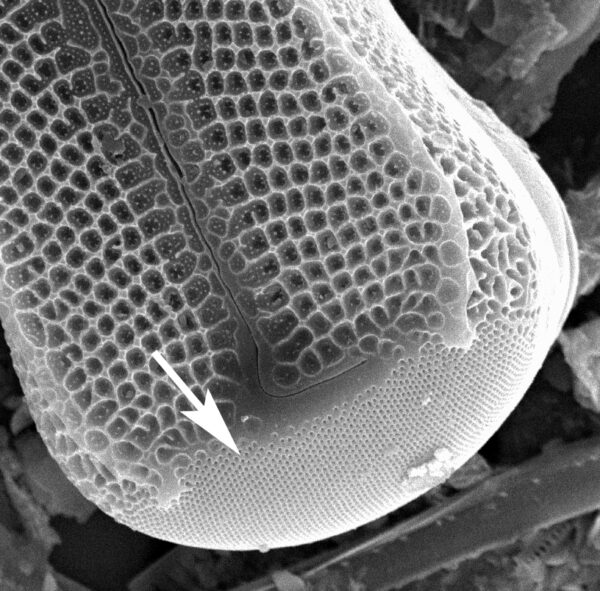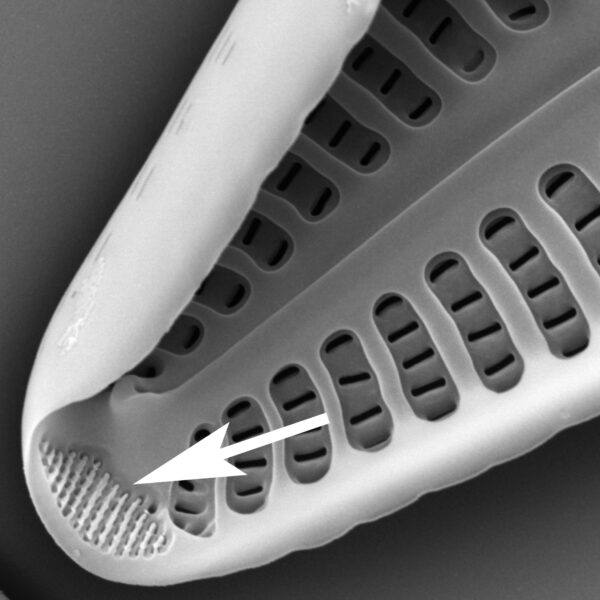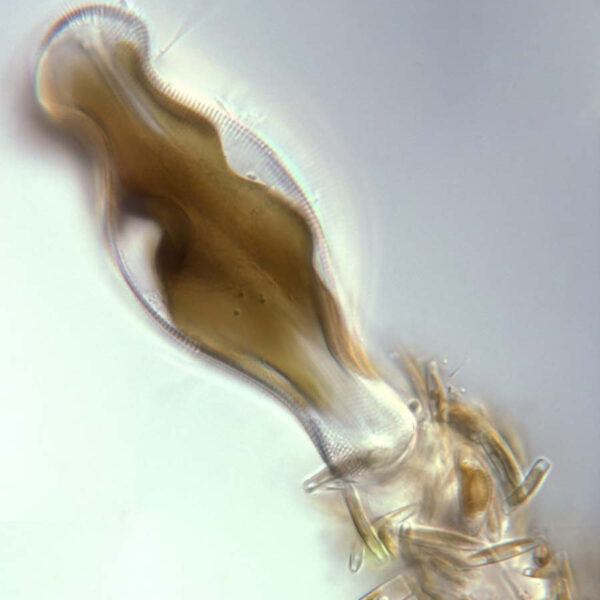Glossary
Like the rest of this website, the glossary is a work in progress. If we’ve missed a term, please contact us to let us know the term and references.
Porefield
A porefield is an area of fine pores set apart from the pattern on the rest of the valve. Diatoms excrete mucopolysaccarides through the porefield. These extra polymeric substances (EPS) comprise the stalks and pads which attach diatoms to substrates and to sibling cells.
(Porefield is a closed compound word combining pore and field. This web flora also uses other compound words such as headpole and footpole.)
There are several types of porefields:
- apical porefield: separated from valve striae by a narrow hyaline area; occurs at valve apex of some araphid (e.g. Diatoma) and some raphid genera (e.g. Cymbella). See illustrations on this page;
- ocellulimbus: porefield set into the apex of a valve (e.g. Pseudostaurosira);
- ocellus: porefield with a distinct hyaline rim (e.g. Pleurosira);
- pseudocellus: porefield lacking demarcation and with pores decreasing in size (e.g. Terpsinoë).
See ocellulimbus, ocellus, and pseudocellus for more detail.
Citations
-
Publication Link: 10.1111/j.1529-8817.2011.01081.x

Image Credit: Sarah Spaulding

Image Credit: Marina Potapova

Image Credit: Sarah Spaulding
 Diatoms of North America
Diatoms of North America

